How to Dry Orange Pomander Balls
If you want your home to smell amazing for the holidays, let me show you how to dry orange pomander balls! This classic Christmas tradition is perfect for the whole family.
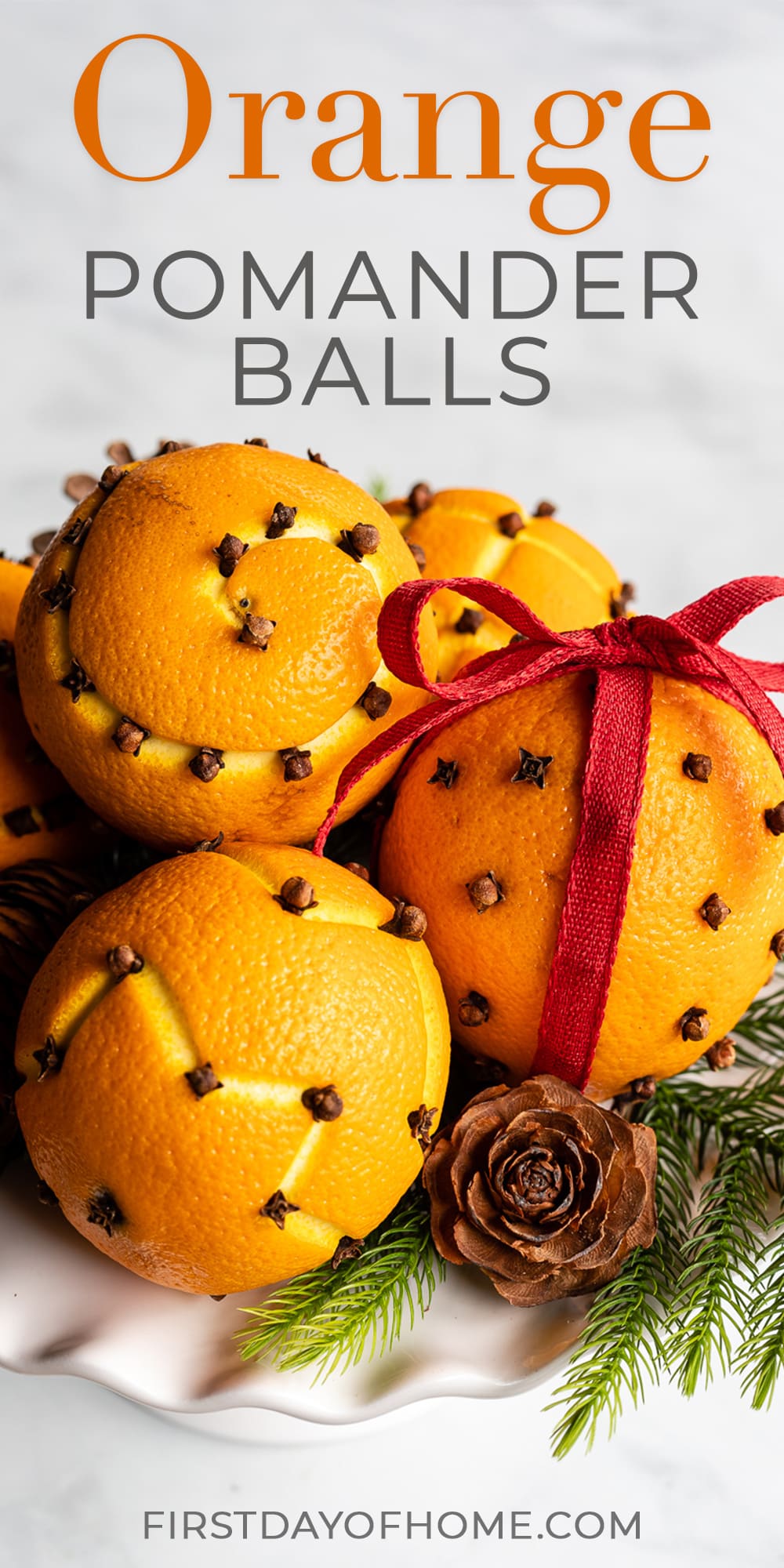
This post contains affiliate links, and I will be compensated if you make a purchase after clicking on my links. For more information, please see my disclosures.
What are Pomander Balls?
The word “pomander” comes from the French phrase pomme d’ambre (apple of amber). Originally, pomander balls were made of decorative metal or china and held scented herbs or spices.
Back in the Middle Ages, these aromatic balls served as protection against diseases or disguised unpleasant odors. (They also became somewhat of a fashion statement.)
Today, orange pomander balls add a lovely fragrance to homes and double as beautiful Christmas decor. You can use them to make DIY ornaments, a holiday centerpiece, or a homemade Christmas wreath.
How to Make Orange Pomander Balls with Cloves
To make dried orange pomander balls, you’ll want to make sure you don’t skip the spice recipe below. The orris root powder, in particular, will help preserve the pomanders for potentially years to come.
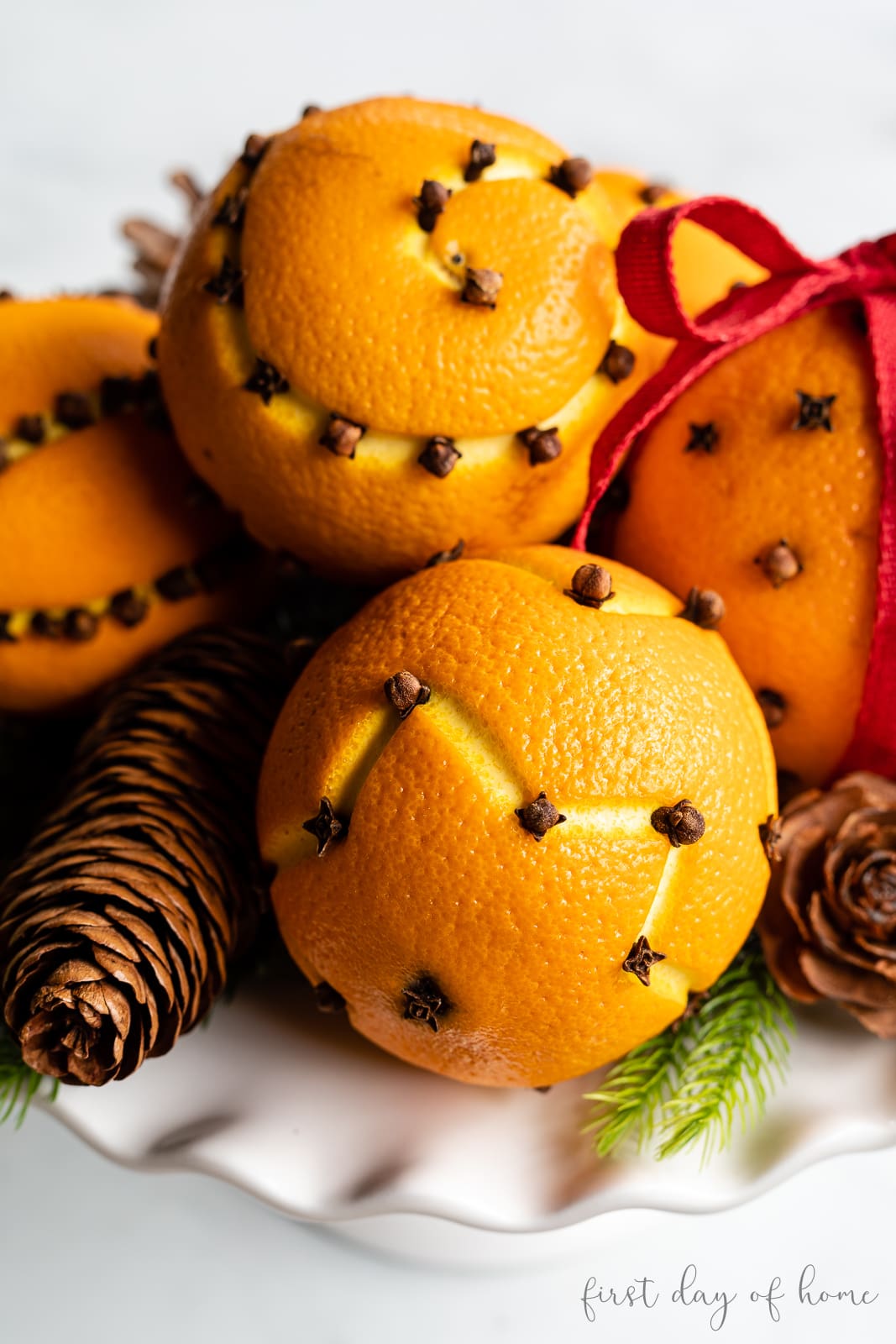
Otherwise, you can display your fresh orange pomanders during the day and refrigerate them at night to prolong their freshness. The cloves help to dry out the orange, but mold will eventually form on the orange if left at room temperature. (Trust me. I tested it!)
Supplies
- 5-6 oranges
- 1 to 1.5 ounces whole cloves
- Toothpicks or skewers
- Citrus zester with channel knife (optional)
- Ribbon (optional)
- Spice mixture recipe(see below)
Spice Mixture Recipe
- 1/2 cup orris root powder
- 1 tbsp cinnamon
- 1 tsp allspice
- 1/2 tsp nutmeg
- 1/2 tsp ginger
Mix all spices in a paper sack or place the mixture in a food storage container until ready to use.
Step 1: Poke holes in the oranges in various patterns
Using a toothpick or skewer, begin to poke holes in your oranges following any pattern you like. Be sure to space your holes about 1/4-inch apart since the orange pomander balls will shrink as they dry.
If you’re set on precision, use a pen or rubber bands to plan your design in stripes, spirals, stars, or random shapes. This is the part where children can have some fun as little artists!
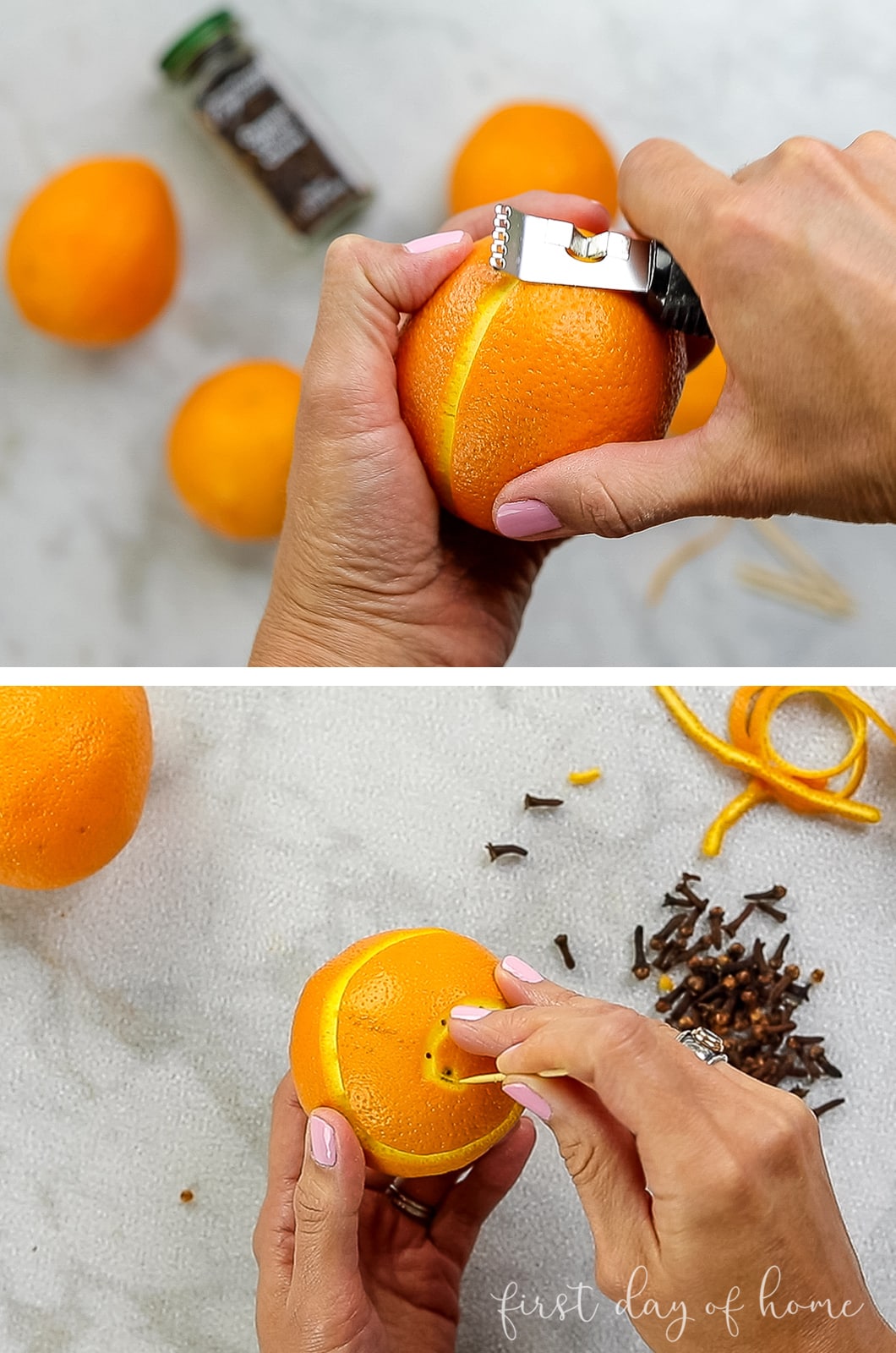
To create exposed ridges like the ones you see in the orange above, use this zester and channel knife combo before you poke your holes. It’s my favorite new kitchen tool!
Bonus: You can use the leftover orange ribbons as garnishes for cocktails or a festive charcuterie tray.
Step 2: Insert cloves into holes
As you begin poking holes in your oranges, it’s helpful to insert cloves into the holes soon after. This will help you keep track of where you’ve made the holes.
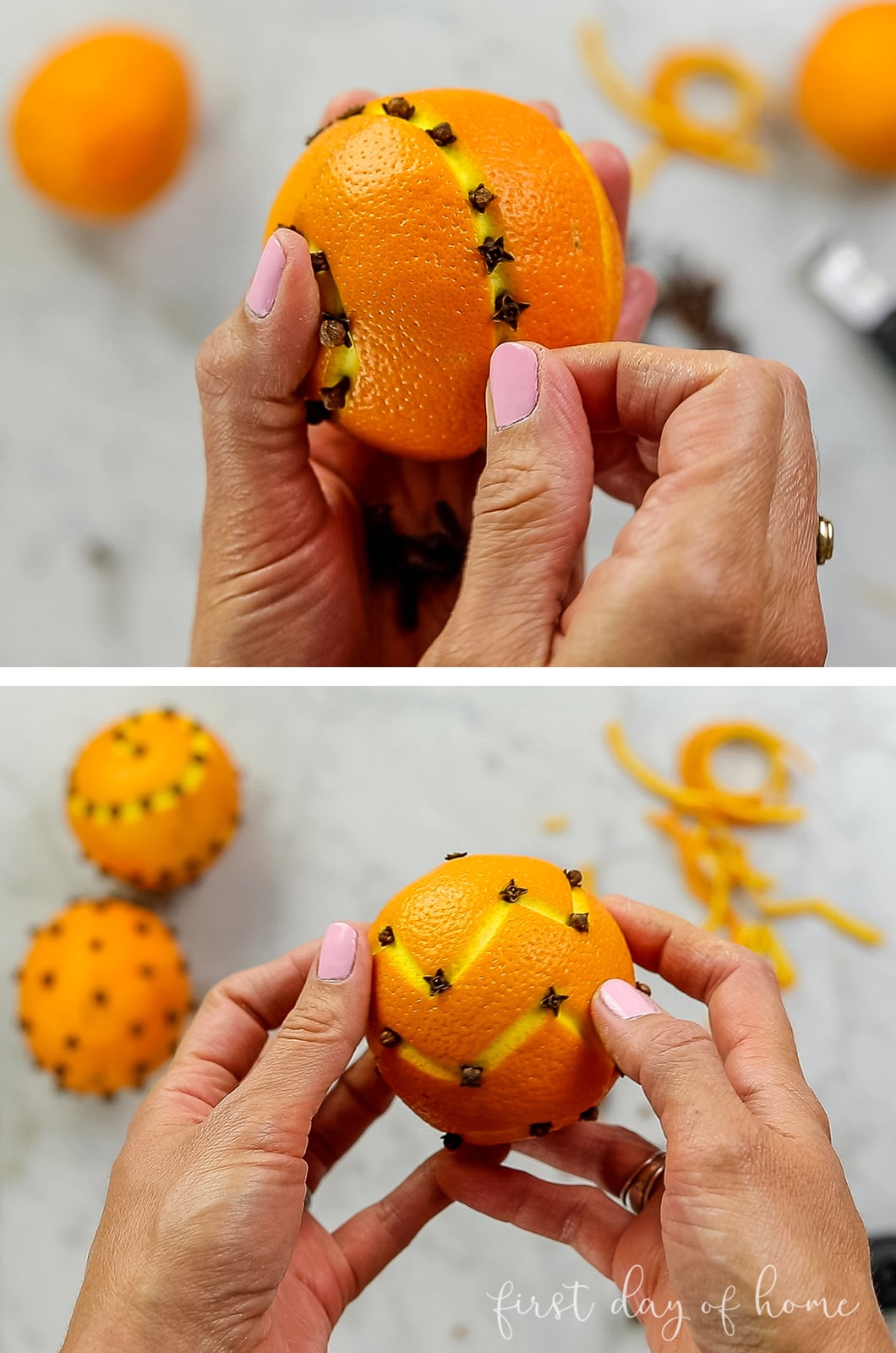
If I’m using the channel knife to create ridges, I’ll create all ridges first, then poke holes in sections, adding cloves along the way.
The cloves help “wick” the moisture from the orange, creating the most heavenly holiday scent in your home!
Dried Orange Slices
For another fun craft with oranges, try making these dried orange slices.
They’re a great addition to your season home decor, from fall through Christmas.
Step 3: Dry or Display Your Orange Pomander Balls
Orange and clove pomander balls take only minutes to make, but they can last quite a long time when cared for properly.
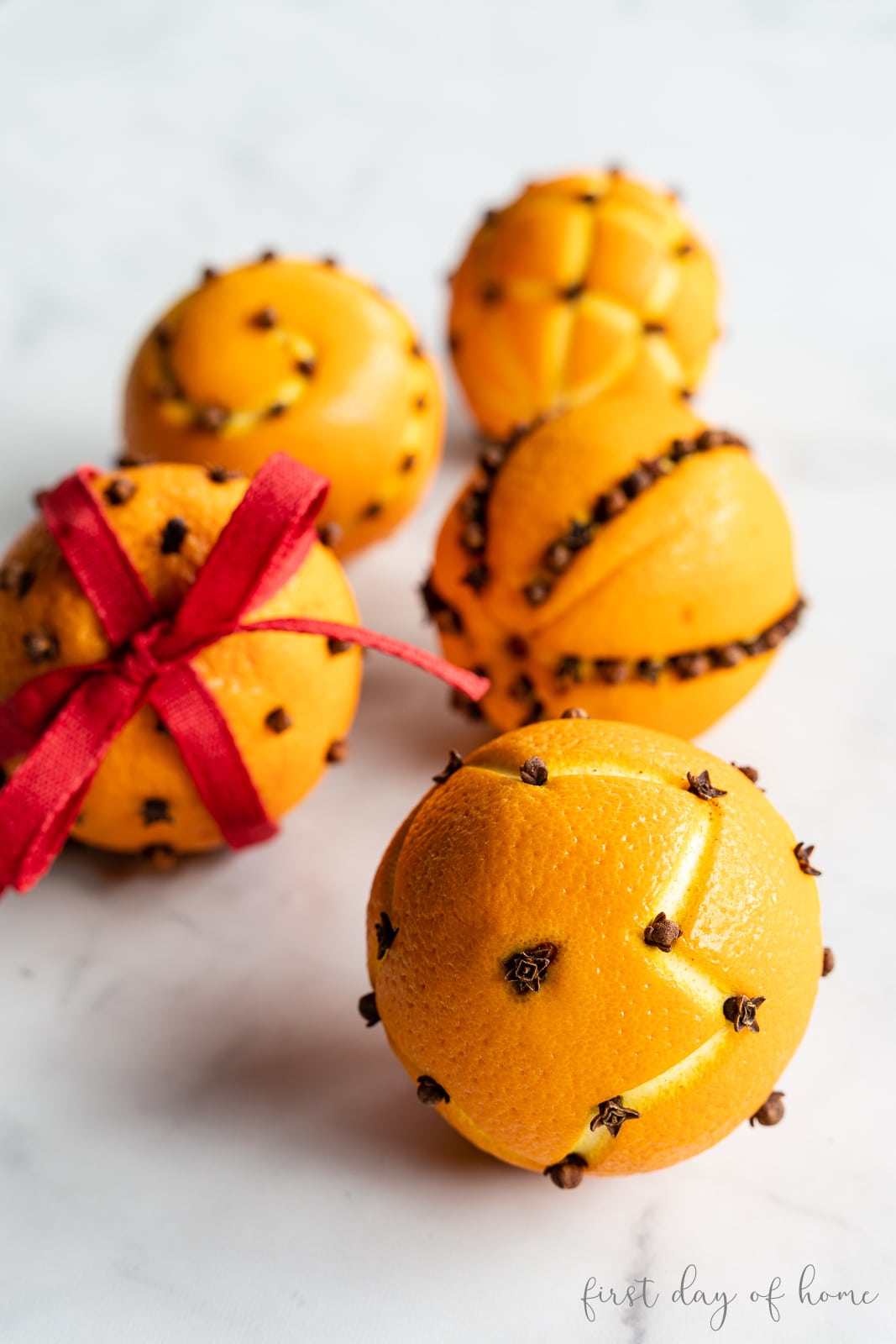
If you choose to display your pomander balls without preserving them, you’ll want to place them in the refrigerator at night to prolong their freshness.
Many people choose to run a wire through the pomander balls to hang them as ornaments, though I suggest drying them first. (See the next section for details.)
How to Dry Orange Pomander Balls
Many families enjoy making Christmas orange pomander balls annually, so there’s no need to fully dry them. Rotating the pomander balls every so often or hanging them with wire can help prevent mold.
However, you can also learn how to dry orange pomander balls to enjoy them a little longer.
Pomander Ball Spice Mixture and Fixative
To begin the drying process, combine 2-3 tablespoons of the spice recipe above with one orange in a paper bag. Gently mix the pomander ball and spices until the orange is well coated.
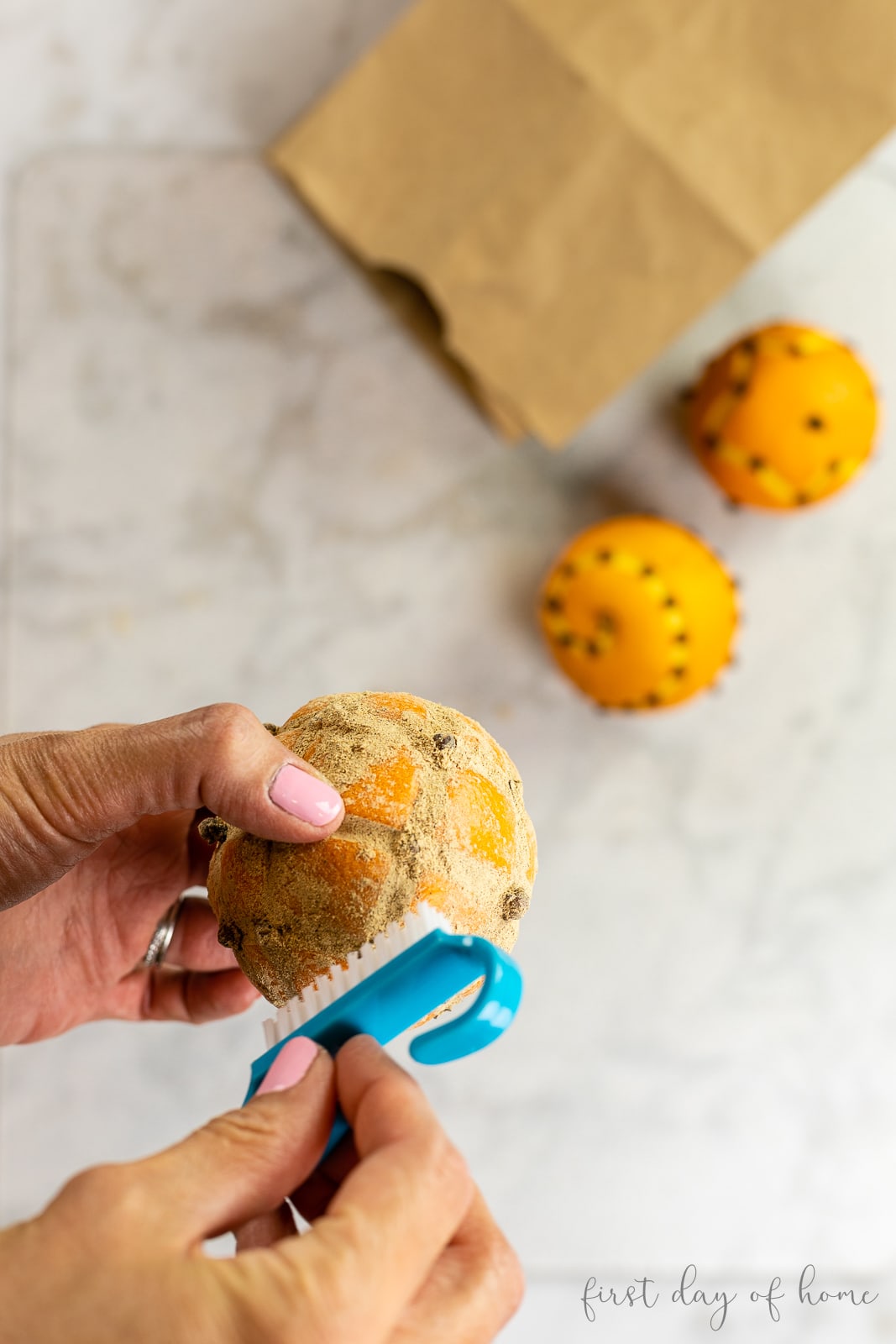
You can later brush off the spice mixture once your orange pomander has fully dried.
The orris root powder serves as a fixative that helps the orange pomander retain its fragrance and enhances the scents of the other spices. You can also use it to make DIY potpourri with dried flowers.
Option 1: Food dehydrator
Once the pomander ball is coated in spices, use a dehydrator at low to medium heat to remove moisture from the fruit.
Option 2: Natural drying
If you don’t own a dehydrator, try leaving your pomanders in the bag with the spice mixture for 3-6 weeks. Check the bags every other day to make sure no mold has formed.
Pomander balls will shrivel/shrink as they dry and become hardened. You’ll know they’re done drying when they feel hollow on the inside.
After brushing off any remaining spice mixture, you’re ready to display your pomanders for possibly years to come!
However, I enjoy the tradition of making them fresh each year with the kids.
Ways to Use Orange Pomander Balls
I hope you enjoyed learning how to dry orange pomander balls! Here are a few ways you can enjoy your creations as home decor.
- Make a DIY Christmas pomander ornament. Tie a ribbon around the pomander ball or thread a needle through the center. Just keep in mind the pomander may shrink over time.
- Pair the orange pomanders with other citrus fruits like lemons or grapefruit. You can create a beautiful display on a milk glass cake stand or tray. Simply add pine branches, berries, or pine cones.
- Create a wreath or garland. Add orange pomanders to your holiday mantel or door decor once they have fully dried.
Pin it for later!
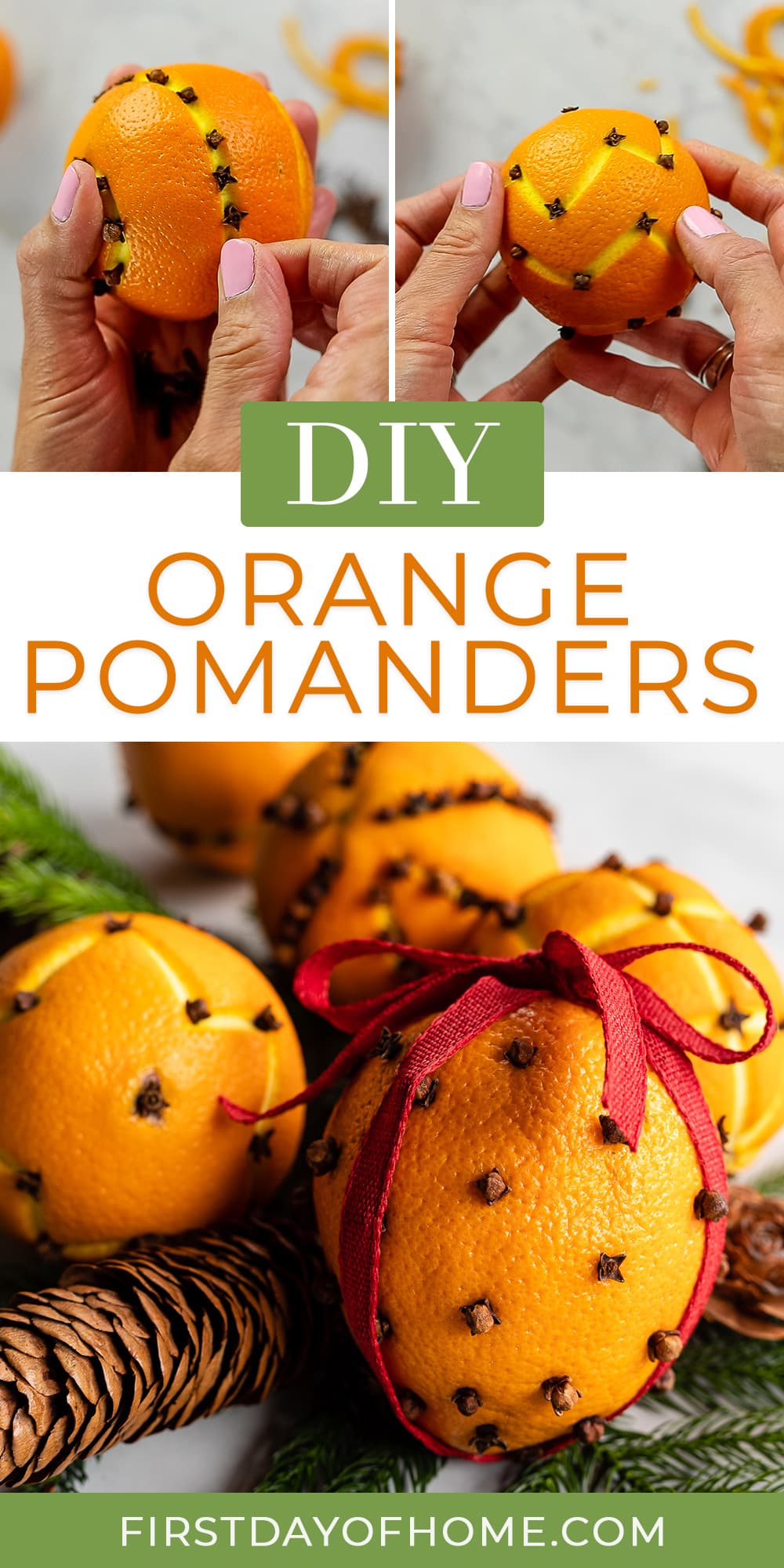


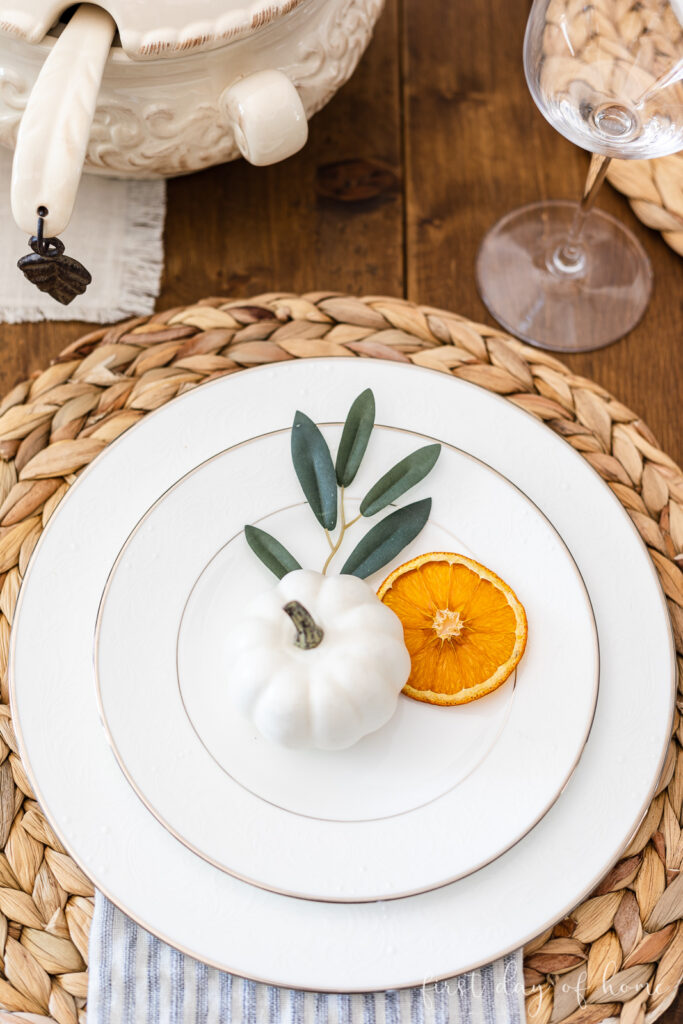
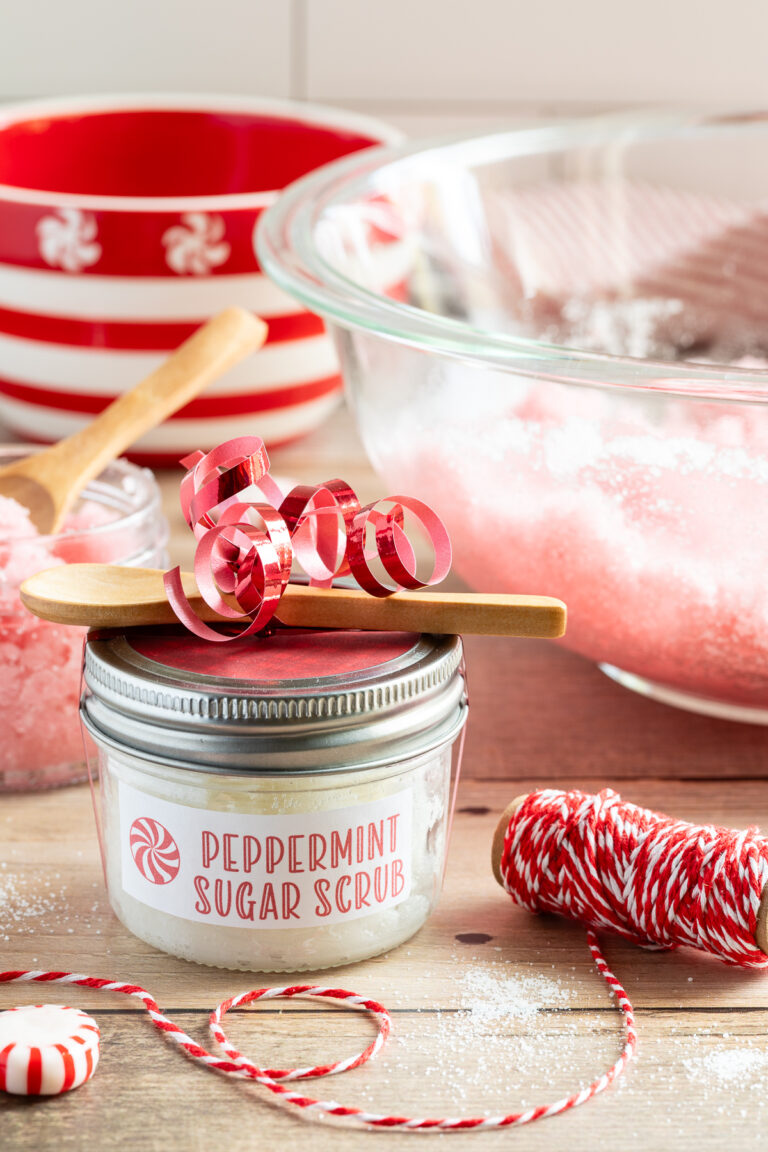
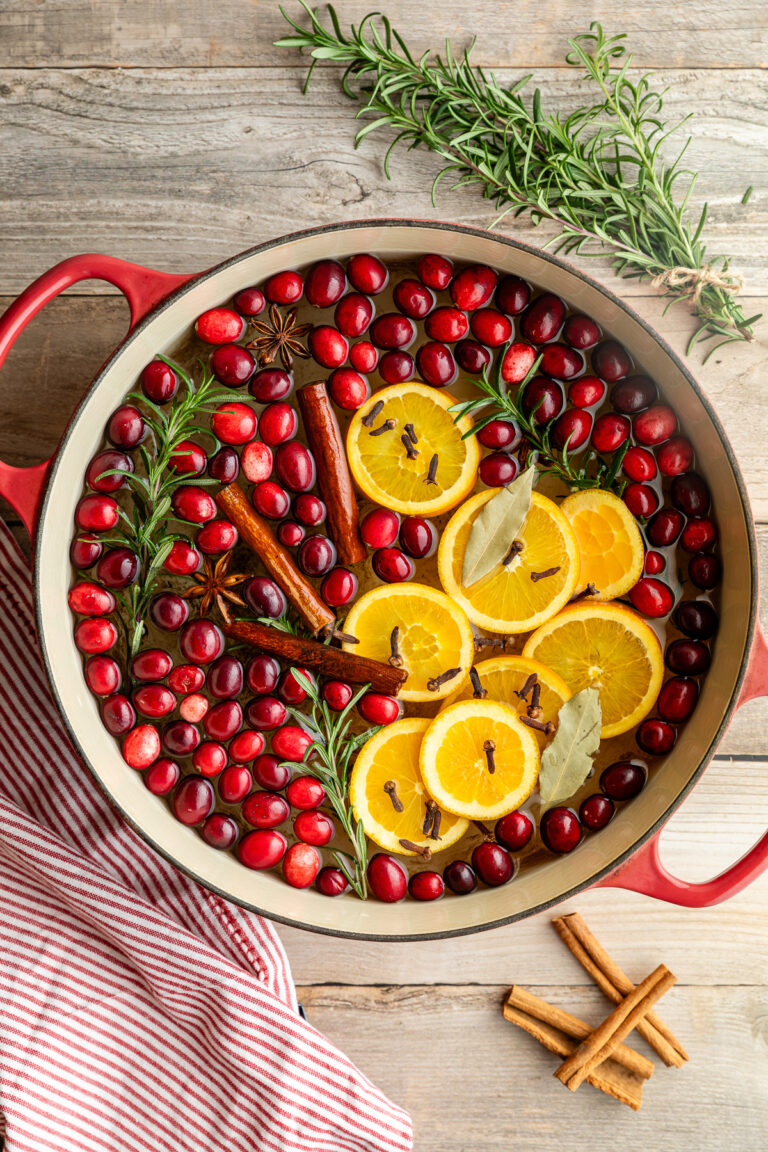

i made some but we completely covered the orange in cloves you cant see any orange. I have kept it for years and it never rot do you think i just got lucky or did my method cause it to not mold.
Hi Jayci! I definitely don’t think it was just luck. The cloves actually help preserve the orange. They act as a natural dehydrator, so I’m sure that’s why your orange has lasted for so long. How wonderful to keep it for so long!
Crissy, I’m so excited to know the secret to drying pomanders with orris root powder. I’ve always just used them fresh but I like the idea of drying them. Yours are so pretty! Pinning!
Thanks so much, Michelle! This is a fun little project, and I love the smell of the pomanders. I appreciate you stopping by!
Oh, Crissy! This looks amazing. I can almost smell them through your gorgeous photos. I want to try this so I pinned it for later. Thank you for sharing!
Thanks so much, Jen! They do smell really good, in all honesty. Thanks for stopping by and pinning too, my friend!
I always love reading your posts… especially these floral and fruit drying posts. I always learn something new! Pinned! Hoping the kids and I can make these together!
Thanks so much, Julie! I guess I’ll need to move on to candles next to keep the good aromas coming! LOL! I hope you and the grandbabies have a blast with this. Hugs!